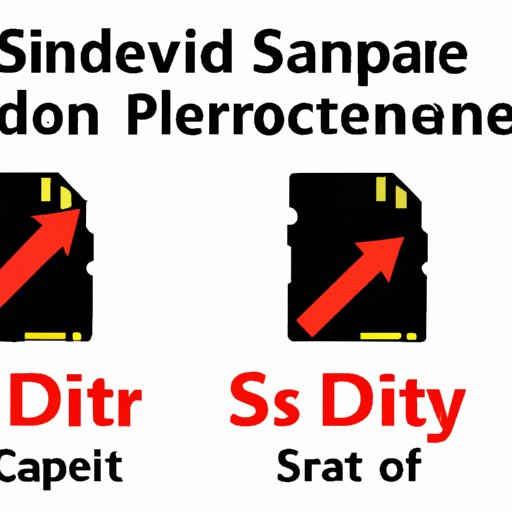I. Introduction
An SD card, also known as a Secure Digital card, is a small memory card used to store files on various devices such as cameras, smartphones, and tablets. Formatting an SD card is the process of erasing all data on the card and preparing it for new data storage. This article will guide you through everything you need to know about formatting an SD card, including step-by-step instructions, best practices, common errors to avoid, and formatting tools.
II. Step-by-Step Guide
The following are the steps to format an SD card:
- Insert the SD card into your device or an SD card reader connected to your computer.
- Open the file explorer and locate the SD card.
- Right-click on the SD card and select ‘Format’ from the drop-down menu.
- Select the file system format that is compatible with your device. The most common file systems are FAT32 and exFAT for cross-device compatibility, and NTFS for Windows computers.
- Select the allocation unit size that matches your device’s requirements.
- Uncheck the ‘Quick Format’ option to perform a full format.
- Click ‘Start’ to begin the formatting process.
- Once completed, remove the SD card safely and reinsert it into your device.
It is essential to select the right settings during formatting to ensure the optimal performance of your SD card.
Here’s a visual aid to help you through the process:

III. Comparison Guide
There are different methods to format an SD card, including through your device, Windows Explorer, and third-party software.
Here’s a comparison of the advantages and disadvantages of each method:
| Method | Advantages | Disadvantages |
|---|---|---|
| Device Formatting | Simple and easy to use. | May not offer advanced formatting options. |
| Windows Explorer Formatting | Can format any type of file system. | May require additional software to format to non-Windows file systems. |
| Third-Party Software Formatting | Offers advanced formatting options and additional tools. | May require additional payment for advanced features. |
IV. Best Practices Guide
Here are some tips to keep in mind when formatting an SD card:
- Format the SD card after transferring or saving all data to avoid losing important files.
- Format the SD card regularly to maintain optimal performance.
- Use the correct file system format that is compatible with your device.
- Do not remove the SD card during the formatting process, or you may lose data and damage the card.
Precautions to take before formatting:
- Make sure to create a backup of all files before formatting the SD card to prevent data loss.
- Check the device’s manual for any formatting recommendations specific to your device.
- Avoid formatting if the SD card is physically damaged as it may not work after the process.
V. Common Errors to Avoid
Formatting an SD card may come with errors that can cause data loss or damage to the card. Here are some common errors to avoid:
- Removing the SD card during formatting can cause data loss and damage the card.
- Formatting the wrong drive can erase important data on your computer or other devices.
- Not selecting the correct file system format can cause formatting errors or compatibility issues with your device.
- Formatting without backing up the data can cause irretrievable data loss.
VI. Review of Formatting Tools
There are various formatting tools available to format an SD card, including:
- Windows Explorer: A built-in Windows tool that allows you to format any type of file system.
- SD Card Association Formatter: A free and official formatting tool for SD cards that supports most SD card types.
- MiniTool Partition Wizard: A third-party formatting tool that offers advanced features such as disk cloning and partition extensions.
While all the above formatting tools are effective, third-party tools like MiniTool Partition Wizard offer more advanced features but require payment for use.
VII. Conclusion
Formatting an SD card is a crucial step in maintaining optimal performance and avoiding data loss. Follow the above step-by-step guide, best practices, and precautions to safely format your SD card and avoid any common errors that can occur during the process.
Do you have any tips or questions on how to format an SD card? Feel free to share them in the comments section below.
